
The second NTU Terminator filtration test, held at the end of 2020, was carried out at a cooling tower system at our customer’s facility, one of the leading companies in the polyester industry. Filtration tests were performed under a pressure of 2.6 bar at a flow rate of 3 m³ / h, using serially connected Filternox® NTU Terminator filters.
1. Flow Chart
1.1. Filtration flow chart of tower pool filtration at cooling tower-X

1.2. Filtration flow chart of water circulated in the IBC tank at cooling tower-X

2. Sample and System Images
2.1 Filtration Tests Performed at the cooling tower-X
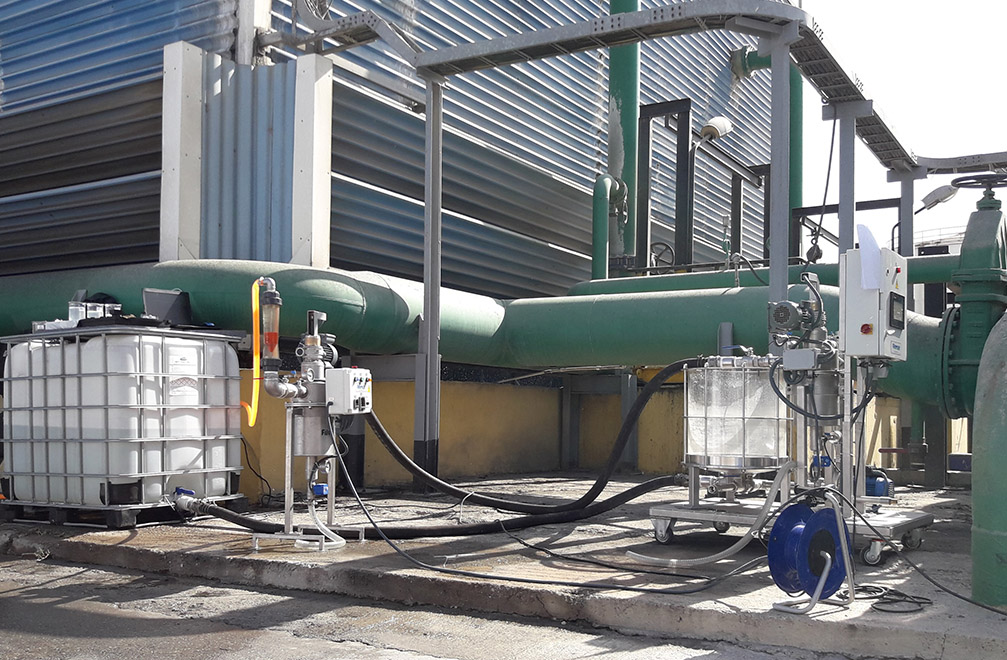 |
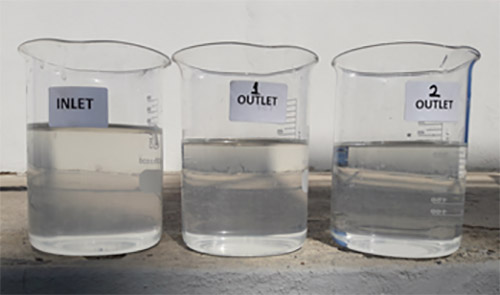 |
| Pic 1.1. Filternox pilot filtration system | Pic 1.2. Left to right – Filter-1 inlet, Filter-1 outlet, Filter-2 outlet water samples |
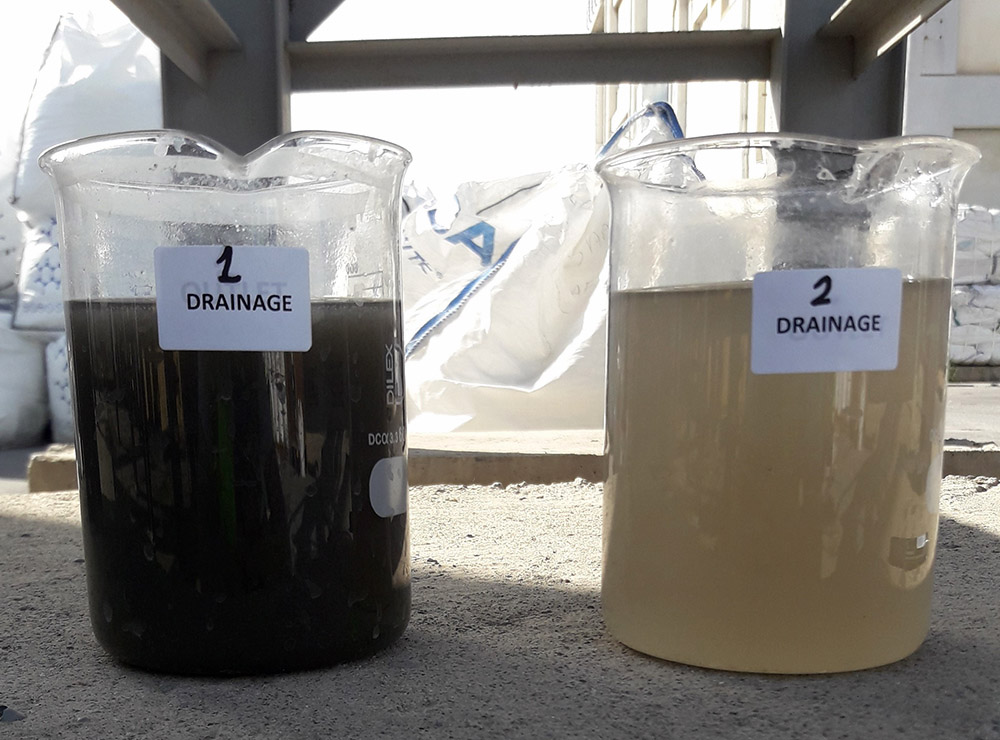 |
| Pic 1.3. Filter-1 and Filter-2 drainage water samples |
2.2 Filtration tests performed from the circulation of 500L water taken from the bottom of the cooling tower X into an IBC tank
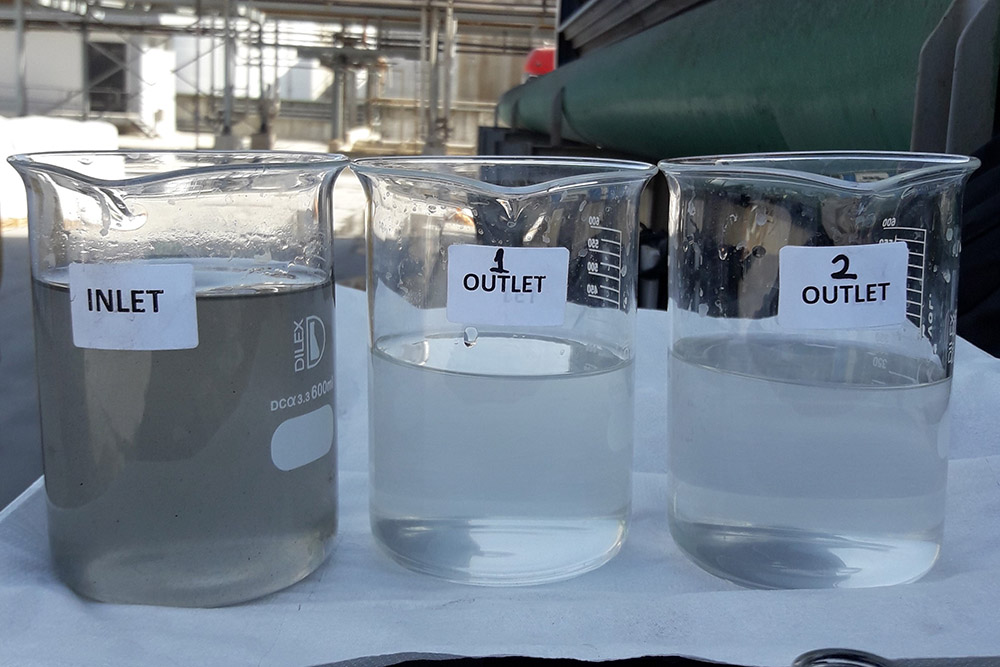 |
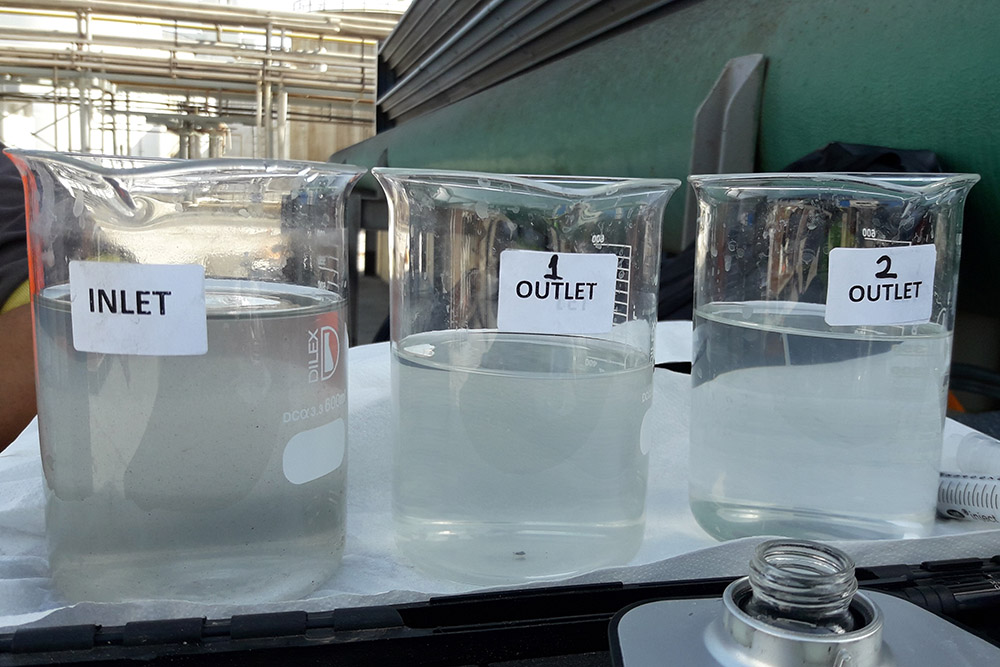 |
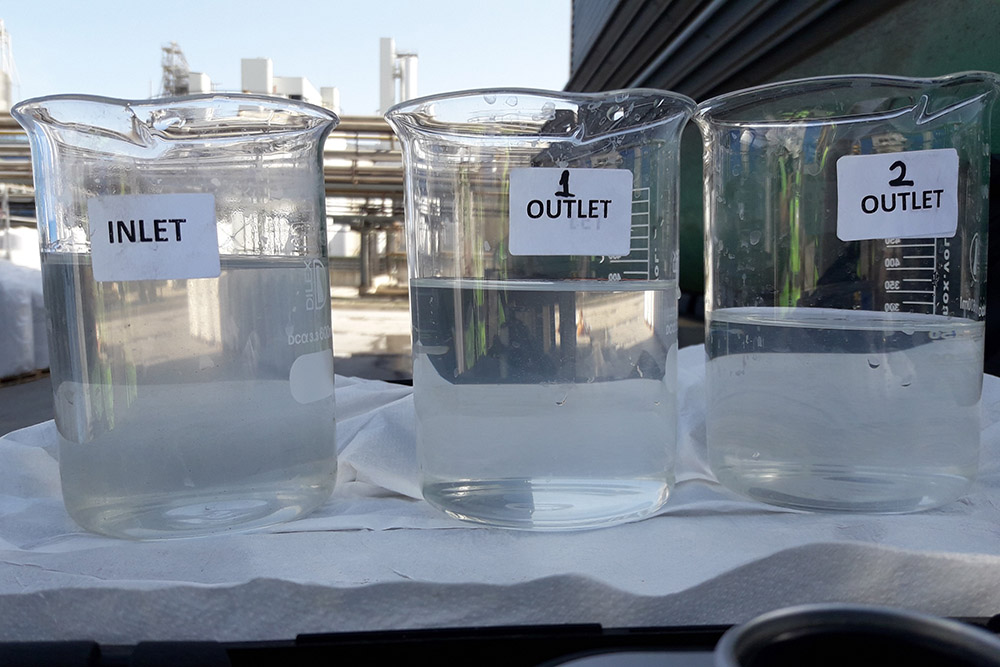 |
| Pic 2.1. Circulation starts at 11:20h (at minute zero) | Pic 2.2. Circulation at minute 20 | Pic 2.3. Circulation at minute 35 |
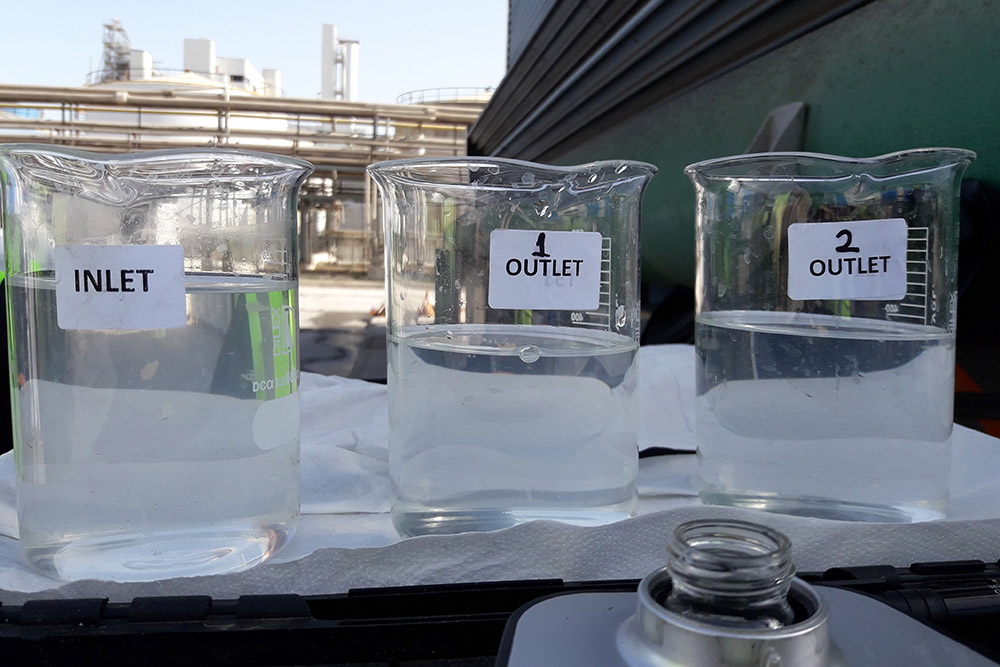 |
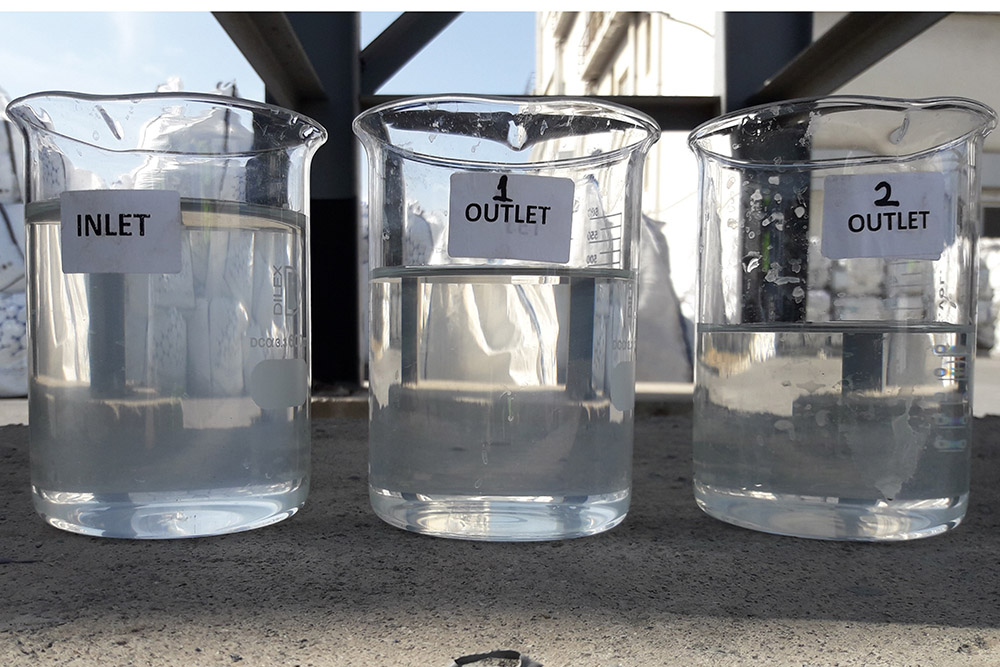 |
|
| Pic 2.4. Circulation at minute 43 | Pic 2.5. Circulation at minute 60 |
3. Conclusion and Evaluation
In the filtration tests performed with the filtration of Filternox® NTU Terminator filters;
Cooling tower X:
- An average of 40% suspended solids removal was achieved in one stage and 58% in two stages.
- Turbidity removal was achieved on average 48% in one stage and 65% in two stages.
Circulation of cooling tower X water, taken into 500L IBC tank:
- As a result of 1 hour of circulation of the water with an initial TSS value of 134 ppm and initial turbidity value of 49 NTU, it was observed that the TSS decreased to 17 ppm and turbidity dropped to 7.22 NTU.
As a result of the filtration to be performed in the cooling line with Filternox® NTU Terminator filtration system;
- Lifetime of the tower filling will increase
- The amount of chemicals used in the system will be reduced
- The amount of tower blowdown water will be reduced
- Cooling efficiency will be increased
- Unnecessary stops / work interruptions will be prevented
- Operation, maintenance and energy costs will be reduced
- The cooling line will be protected from particles
Cooling efficiency will increase substantially as a result of all the above mentioned benefits.

